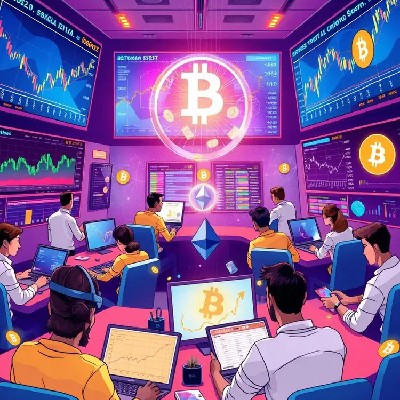
Пов'язано з монетами
Калькулятор цін
Історія цін
Прогноз ціни
Технічний аналіз
Посібник з купівлі монет
Категорія криптовалют
Калькулятор прибутку

Ціна EthereumETH
Як ви ставитеся до Ethereum сьогодні?
Ціна Ethereum сьогодні
Яка найвища ціна ETH?
Яка найнижча ціна ETH?
Чому ціна ETH постійно коливається? Які фактори впливають на динаміку ціни ETH?
Прогноз для ціни Ethereum
Коли найкраще купувати ETH? Чи варто купувати або продавати ETH зараз?
Якою буде ціна ETH у 2026?
Якою буде ціна ETH у 2031?
Історія цін Ethereum (UAH)
 Найнижча ціна
Найнижча ціна Найвища ціна
Найвища ціна 
Ринкові дані Ethereum
Історія ринкової капіталізації Ethereum
Ринок Ethereum
Активи Ethereum
Матриця розподілу утримань Ethereum
Утримання Ethereum за концентрацією
Адреси Ethereum за часом утримання

Оцінки Ethereum
Про Ethereum (ETH)
Ethereum – це блокчейн другого покоління, який дає змогу створювати та використовувати децентралізовані застосунки (dApps) і смартконтракти . Запропонований 2015 року Віталіком Бутеріним, Ethereum прославився завдяки введенню смартконтрактів у світ блокчейну. Вартість кожної транзакції і виконання смартконтракту на Ethereum вимірюється в газі.
Володіючи найбільшою екосистемою dApp, Ethereum також є основою для багатьох рішень рівня 2, таких як Arbitrum і Polygon , які забезпечують більш швидку і дешеву обробку транзакцій.
Що таке Ethereum (ETH)?
Ethereum – це друга за величиною криптовалюта за ринковою капіталізацією після Bitcoin. Вона була створена російсько-канадським програмістом Віталіком Бутеріним і офіційно запущена 30 липня 2015 року. Ether (ефір), нативна криптовалюта Ethereum, забезпечує роботу всієї екосистеми, даючи змогу здійснювати транзакції, виконувати смартконтракти і компенсувати нодам використання їхніх обчислювальних ресурсів. Gwei (гвей) – це найдрібніша одиниця Ether, один Gwei дорівнює 0,000000001 ETH (одна мільярдна частина ETH).
Ethereum було запущено за допомогою первинної пропозиції монет (ICO) у період з 22 липня по 2 вересня 2014 року. Під час ICO учасники могли купити Ether (ETH) за Bitcoin (BTC) за курсом 2000 ETH за 1 BTC – близько 0,31$ за 1 ETH. Під час ICO було зібрано понад 18 мільйонів $, що зробило його одним із найуспішніших заходів зі збору коштів у криптовалютному світі. З моменту створення Ethereum пропонує розробникам і користувачам децентралізовану мережу для створення і взаємодії із застосунками на основі блокчейну, виключаючи необхідність у централізованих посередниках.
Хто заснував блокчейн Ethereum?
У Ethereum було вісім співзасновників:
• Віталік Бутерін – головний візіонер, автор технічної документації Ethereum.
• Гевін Вуд – написав Yellow Paper та створив мову програмування Solidity.
• Джозеф Любін – засновник компанії ConsenSys, яка спеціалізується на технології блокчейн.
• Ентоні Ді Іоріо – один із перших інвесторів у Ethereum.
• Міхай Алізі – допоміг заснувати Ethereum Foundation.
• Амір Четріт – один із перших інвесторів, який згодом відійшов від проєкту.
• Чарльз Госкінсон – співзасновник Ethereum, який пізніше заснував блокчейн Cardano.
• Джеффрі Вілке – один із ключових розробників Go Ethereum (Geth).
Станом на 2024 рік Віталік Бутерін є єдиним співзасновником, який продовжує активно розвивати екосистему Ethereum. Решта перейшли до керівництва або створення нових блокчейн-проєктів.
Історія Ethereum
2013: Віталік Бутерін, один із засновників Bitcoin Magazine, запропонував Ethereum. Він передбачив блокчейн-платформу для децентралізованих застосунків (dApps), що працюють на смартконтрактах.
2014: Ethereum було анонсовано на конференції North American Bitcoin. Первинна пропозиція монет (ICO) залучила понад 18 млн $.
2015: 30 липня Ethereum запустив свою першу робочу версію Frontier, яка дозволила розробникам створювати dApp.
2016: Ethereum пройшов своє перше оновлення, Homestead, і зіткнувся зі зломом DAO, що призвело до хардфорку, який розділив мережу на Ethereum (ETH) і Ethereum Classic (ETC).
2017: оновлення Byzantium поліпшило конфіденційність і масштабованість за допомогою дев'яти пропозицій щодо поліпшення Ethereum (EIP).
2019: оновлення Constantinople і Istanbul дали змогу оптимізувати витрати на газ, підвищити сумісність і ефективність доказів із нульовим розголошенням.
2020: Ethereum запустив Beacon Chain, запровадивши механізм Proof-of-Stake (PoS) у межах дорожньої карти Ethereum 2.0.
2021: під час оновлень хардфорку Berlin і London було оптимізовано комісії та представлено EIP-1559, що спалює частину комісій за транзакції.
2022: 15 вересня Ethereum перейшов на механізм PoS за допомогою оновлення The Merge, скоротивши споживання енергії на ~99,95%.
2023: оновлення Shanghai і Capella дали змогу вносити ETH у стейкінг й оптимізувати процеси PoS.
2024: Ethereum продовжує фокусуватися на рішеннях із масштабування, таких як шардинг, щоб підвищити швидкість обробки транзакцій і знизити витрати.
Як працює Ethereum
Ethereum є децентралізованою блокчейн-платформою з відкритим вихідним кодом, на якій розробники можуть створювати та запускати смартконтракти – самоздійснювані програми, які забезпечують роботу широкого спектру децентралізованих застосунків (dApp). Він працює на основі глобальної мережі комп'ютерів (нод), які обробляють транзакції і записують їх у блокчейн, гарантуючи безпеку і прозорість. Ether (ETH) є нативною криптовалютою Ethereum і використовується для оплати газу (комісій за транзакції), запуску смартконтрактів і підтримки мережі через стейкінг.
Після того як 2022 року Ethereum перейшов на Proof-of-Stake (PoS), валідатори змінили майнерів для гарантування безпеки мережі. Щоб стати валідатором, вам потрібно внести у стейкінг 32 ETH, які блокуються для підтримки безпеки та ефективності мережі. Зі свого боку, валідатори отримують винагороди за перевірку і додавання нових блоків.
Що робить Ethereum унікальним?
Завдяки більш ніж мільйону токенів, запущених на його блокчейні, і мільярдам доларів, що проходять через децентралізовані застосунки (dApp), Ethereum перевизначив можливості застосування блокчейн-технології. Він підтримує такі токени стандарту ERC-20, як USDT, LINK і BNB, багато з яких входять до числа провідних криптовалют за ринковою капіталізацією. Ethereum також підтримує динамічний ринок невзаємозамінних токенів (NFT), забезпечуючи застосування унікальних цифрових активів в іграх, мистецтві та багато іншого. Оновлення EIP-1559 додало в екосистему дефляційний елемент, спалюючи частину комісії за газ, що ще сильніше зміцнило його економічну модель.
З огляду на глобальний інтерес, що виявляється до таких торгових пар, як ETH до USD і ETH до EUR, Ethereum продовжує лідирувати у формуванні майбутнього для блокчейну.
Яким є наступне оновлення Ethereum?
У чому суть оновлення Ethereum 2.0?
Ethereum 2.0 – це велике оновлення блокчейну Ethereum, яке запускали поетапно, починаючи з Beacon Chain у грудні 2020 року. Найпомітнішою зміною став перехід від Proof-of-Work (PoW) до Proof-of-Stake (PoS) в оновленні The Merge, яке завершилося у вересні 2022 року. Це дало змогу значно знизити енергоспоживання і поліпшити безпеку мережі.
Оновлення Ethereum Pectra
Prague-Electra (Pectra) – це наступне велике оновлення Ethereum, яке заплановано на початок 2025 року. Воно підвищить масштабованість, ефективність і зручність використання завдяки таким ключовим функціям, як пакетні транзакції (EIP-3074), збільшення лімітів на стейкінг (EIP-7251) і оптимізація зберігання даних нод через Verkle Trees (EIP-2935). Дізнайтеся більше про оновлення Pectra і про те, як воно поліпшить ваш досвід роботи з Ethereum.
Чи впливає оновлення Ethereum на ціну ETH?
Оновлення Ethereum можуть вплинути на ціну ETH, але ефект не завжди однозначний. Значні оновлення, як-от The Merge у 2022 році, як правило, викликають ринковий інтерес і можуть призводити до коливань цін, у тому числі до зміни поточної ціни Ethereum. Ці оновлення спрямовані на покращення масштабованості, безпеки та енергоефективності мережі, що можна розглядати як позитивні зміни для довгострокової перспективи Ethereum. Однак на зміни ціни також впливають інші фактори, такі як ширші ринкові умови та настрої інвесторів, тому вплив оновлень на ціну ETH не завжди можна передбачити.
Для отримання актуальної інформації багато трейдерів відстежують поточну ціну ETH разом із графіками Ethereum, щоб краще розуміти короткострокові коливання і поведінку ринку.
Які потенційні варіанти використання Ethereum?
Завдяки своїй гнучкості та децентралізованості Ethereum забезпечує різноманітні варіанти використання:
• Децентралізовані фінанси (DeFi): фінансові послуги без посередників (такі як кредитування та обмін).
• Смартконтракти: автоматизовані угоди в таких галузях, як страхування, нерухомість і юриспруденція.
• Невзаємозамінні токени (NFT): цифрові активи, що підтверджують право власності на унікальні предмети мистецтва, колекційні предмети та медіафайли.
• Децентралізовані автономні організації (DAO): організації, керовані спільнотою.
• Управління ланцюгами поставок: прозоре відстеження товарів, а також перевірка їхньої автентичності.
• Ігри: моделі Play-to-Earn (P2E) і токенізовані активи, представлені в іграх.
• Верифікація особи: безпечне управління цифровими ідентифікаторами та персональними даними.
Де я можу отримати останню інформацію про Ethereum?
Якщо ви хочете бути в курсі найактуальніших подій у світі Ethereum та інших криптовалют, то Bitget допоможе вам у цьому. Новини Bitget нададуть вам актуальну інформацію про оновлення, ринкові тренди та останні події у світі криптовалют
Готові дізнатися більше? Bitget Academy – це ідеальне місце, де ви знайдете прості посібники, поради з торгівлі та корисну інформацію як для початківців, так і для досвідчених трейдерів.
Що чекає на Ethereum далі?
У перспективі розвиток Ethereum триватиме з упором на поліпшення масштабованості, безпеки та децентралізації:
• Шардинг – це велике оновлення, яке дасть змогу розділити Ethereum на дрібніші частини (шарди) для паралельного опрацювання транзакцій, що збільшить швидкість і знизить комісійні збори.
• Рішення рівня 2 – такі технології, як Optimism і Arbitrum, будуть і далі скорочувати транзакційні витрати і підвищувати масштабованість.
• EIP-4844 (прото-данкшардинг) – запроваджує нові типи транзакцій для подальшого зниження комісії за газ і підвищення доступності даних.
• Поліпшення EVM – удосконалення віртуальної машини Ethereum підвищать продуктивність і забезпечать підтримку для більш складних застосунків.
• Оптимізація PoS – постійні поліпшення системи Proof-of-Stake в мережі Ethereum підвищать безпеку, децентралізацію і заохочення за стейкінг.
Почніть інвестувати, отримавши доступ до сторінки торгівлі Ethereum на Bitget . Ціна Ethereum на Bitget оновлюється та доступна в режимі реального часу.
ETH до місцевої валюти
- 1
- 2
- 3
- 4
- 5
Як купити Ethereum(ETH)

Вільно створіть акаунт на Bitget

Верифікуйте свій акаунт

Конвертувати Ethereum у ETH
Торгуйте безстроковими фʼючерсами ETH
Після успішної реєстрації на Bitget і купівлі токенів USDT або ETH, ви можете почати торгувати деривативами, зокрема фʼючерсами на ETH, або скористатися маржинальною торгівлею, щоб збільшити свій дохід.
Актуальна ціна ETH дорівнює ₴74,442.79, а за 24 години ціна змінилася на -0.65%. Трейдери можуть заробляти на фʼючерсах ETH, відкриваючи лонг- або шорт-позиції.
Приєднуйтесь до копітрейдингу ETH, підписавшись на елітних трейдерів.
Ethereum новин

Купити більше
Поширені запитання
Яка ціна Ethereum сьогодні?
Скільки коштує один Ethereum (ETH)?
Коли було запущено Ethereum?
Bitcoin і Ethereum: що краще купити?
Яка загальна пропозиція токенів Ethereum?
Який прогноз ціни на Ethereum у 2025 році?
Яка поточна ціна Ethereum?
Який обсяг торгівлі Ethereum за 24 години?
Який історичний максимум Ethereum?
Чи можу я купити Ethereum на Bitget?
Чи можу я отримувати постійний дохід від інвестування в Ethereum?
Де можна купити Ethereum за найнижчою комісією?
Де можна купити Ethereum (ETH)?
Video section — Швидка верифікація, швидке здійснення угод

Bitget Insights




Пов'язані активи




























Соціальні дані про Ethereum
За останні 24 години оцінка настрою в соціальних мережах щодо Ethereum склала 3.2, а оцінка настрою в соціальних мережах щодо цінового тренду Ethereum — Бичачий. Загальна оцінка Ethereum в соціальних мережах склала 234,519,440, що відповідає 3 серед усіх криптовалют.
За даними LunarCrush, за останні 24 години криптовалюти згадувалися в соціальних мережах загалом 1,058,120 разів, при цьому Ethereum згадувався з частотою 16.34%, посідаючи 2 місце серед усіх криптовалют.
За останні 24 години 394,780 унікальних користувачів обговорювали Ethereum, і загалом 172,877 згадували Ethereum. Однак, порівняно з попереднім 24-годинним періодом, кількість унікальних користувачів зростає на 4%, а загальна кількість згадок зростає на 20%.
У Twitter за останні 24 години було 6597 твітів, в яких згадується Ethereum. Серед них, 30% є бичачими для Ethereum, 9% — ведмежими для Ethereum, а 60% — нейтральними для Ethereum.
За останні 24 години на Reddit зʼявилося 2118 дописів, в яких згадується Ethereum. Порівняно з попереднім 24-годинним періодом кількість згадок падає на 8%. Крім того, було 0 коментарів, у яких згадується Ethereum. Порівняно з попереднім 24-годинним періодом, кількість згадок падає на 0%.
Огляд соцмереж
3.2